
|
KIT: |
Tamiya 1/32 A6M5 Zero type 52 |
|
KIT # |
60309 |
|
PRICE: |
$99.995 |
|
DECALS: |
See Review |
|
REVIEW & |
Blair Stewart |
|
NOTES: |
` |

|
HISTORY |
The most famous Japanese fighter of World War II was the Zero or "Rei-sen." The Japanese Navy issued specifications to Mitsubishi and Nakajima for the Zero in January of 1938, and the result was Nakajima withdrew from the competition because it believed the specifications were nearly impossible to meet. Mitsubishi pursued the project, and the rest is history. Weight was a primary factor in meeting the Japanese Navy’s performance requirements, so Mitsubishi engineers pursuing a number of weight saving innovations, including the use of Extra-Super Duralumium, a light weight aluminum alloy that was being used in aircraft construction for the first time. To fit on the deck elevators of Japanese aircraft carriers, the Zero was initially designed with folding wingtips about 20 inches long.
The first prototype made its appearance on March 16, 1939, and its first flight on April 1. During the initial flights, Mitsubishi decided on additional innovations to the design, such as the first use in Japan of a constant speed, three-bladed propeller. Having demonstrated that it met or exceeded the Japanese Navy’s requirements – particularly the maximum speed requirement of 310 mph at over 13,000 feet - the aircraft received its military designation on September 14, 1939: A6M1 Type 0 Carrier Borne Fighter. The 0 designation came from the Japanese calendar year 2600, or 1940 – the year in which the aircraft would enter service.
At this time, Japan was fighting in China, and the Japanese Navy, upon hearing about the Zero’s performance, requested that the new fighter be made available to its units in China. In July 1940, 15 preproduction aircraft were sent to China and provided to the Navy. On August 19, the China Zeros saw flew their first combat mission, although there was no aerial action for the fighters during the flight. On September 13, however, Japanese Zeros attacked a flight of Chinese Air Force I-15 and I-16 fighters, destroying all 27 of them without a single loss. Thus began a long history of aerial victories for the infamous Zero. In fact, the aircraft’s performance in China allegedly was an important factor convincing the Japanese military leadership to attack the United States and enter a widespread war in the Pacific.
Zero fighters (primarily Model 21s) participated in the attack on Pearl Harbor, providing air cover for the dive and torpedo bombers as well as conducting some air-to-ground strafing of various military facilities on Oahu. During initial engagements with US fighters in the Pacific, particularly P-39s and P-40s, the Zero demonstrated its superiority time after time. The Zero never had an engine rated over 1200 HP, but it was often called on to fight fighters powered by engines in excess of 2000 HP. To illustrate its relatively lightweight, the Zero weighed about 25% less than an F4F Wildcat and about 50%less than an F6F Hellcat.
In June 1941, in an attempt to increase high altitude performance, a more powerful engine was installed in the aircraft. Designated the A6M3 Model 32, this version included a shorter, stronger wing achieved by removing the 20 inch folding tips and replacing these with a square wingtip. The performance of the Model 32, however, was not impressive, and its range was considerably less than previous models. Moreover, by early 1943, US and allied aircraft performance had improved to the point where the Zero needed more performance changes to keep it competitive in air-to-air combat. The result was the A6M5 Model 52, the subject of Tamiya’s new kit.
The short wing tips of the Model 32 were retained, but the Model 52 wingtips were rounded. The model 52 also had a heavier gauge skin on its wings to increase diving speed. Finally, to increase overall speed, the exhaust collector ring was replaced by individual exhaust stacks that exited between notches in the cowling flaps. With the Model 52, the Zero’s maximum speed in level flight was increased to 351 mph. The prototype first flew in the summer of 1943, and over 6000 Model 52s were produced, making it the most produced model of the over 10,900 Zeros that were ultimately produced.
|
THE KIT |
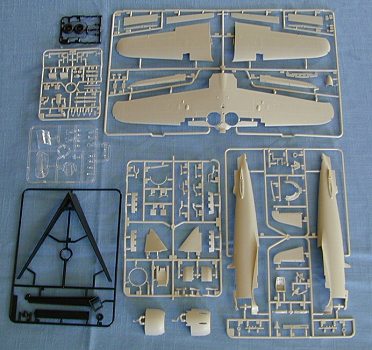 |
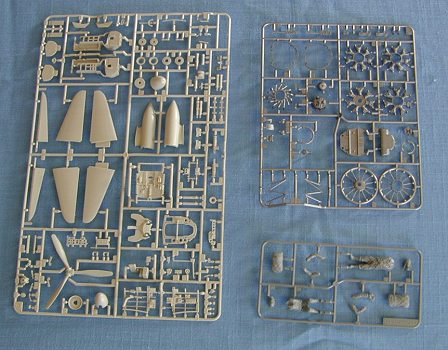 |
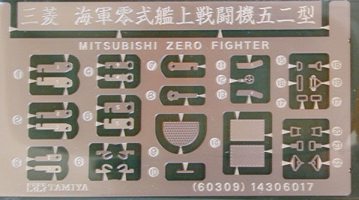 |
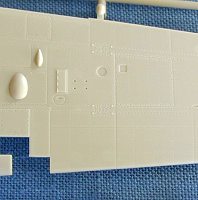 |
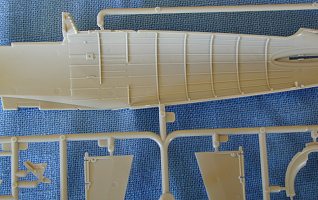 |
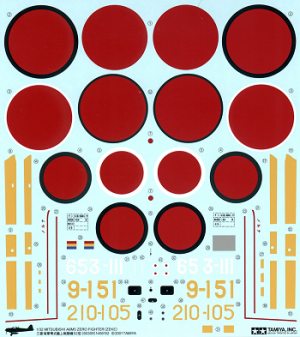 The decal sheet is
equally impressive. The sheet provides markings for three different aircraft:
(1) one from the 210th fighter group based at Meiji in 1944-45; (2)
one from the 653rd fighter group based at Ohita Prefecture in 1944;
and (3) one from the Rabaul Fighter Group based at New Britain Island in
1943-44. All the exterior markings on the sheet look superb (including the
Hinomarus). When you look at decals 44, 45, 46 and 47 – the instrument decals,
they appear to be black squares. But a quick e-mail to Tamiya customer service
revealed the following: this is Tamiya's "Black Magic" as they call it.
The decal's appear to be black, but if you follow the instructions in the
"tech-tip" box on the bottom of page 10 of the instructions manual, when
everything dries the instruments will magically appear.
The decal sheet is
equally impressive. The sheet provides markings for three different aircraft:
(1) one from the 210th fighter group based at Meiji in 1944-45; (2)
one from the 653rd fighter group based at Ohita Prefecture in 1944;
and (3) one from the Rabaul Fighter Group based at New Britain Island in
1943-44. All the exterior markings on the sheet look superb (including the
Hinomarus). When you look at decals 44, 45, 46 and 47 – the instrument decals,
they appear to be black squares. But a quick e-mail to Tamiya customer service
revealed the following: this is Tamiya's "Black Magic" as they call it.
The decal's appear to be black, but if you follow the instructions in the
"tech-tip" box on the bottom of page 10 of the instructions manual, when
everything dries the instruments will magically appear.|
CONCLUSIONS |
|
REFERENCES |
If you would like your product reviewed fairly and quickly by a site that averages thousands of visits a day, please contact me or see other details in the Note to Contributors.